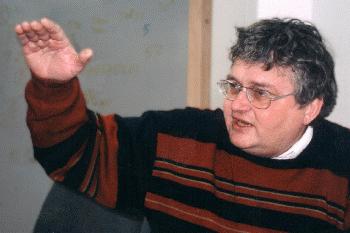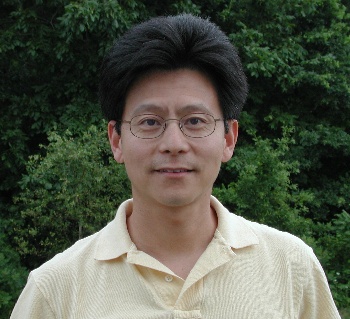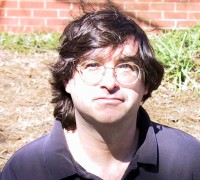<Back to Index>
- Physicist Per Bak, 1948
- Physicist Chao Tang, 1900+
- Physicist Kurt Wiesenfeld, 1900+
PAGE SPONSOR

Per Bak (December 8, 1948, Brønderslev, Denmark – October 16, 2002, Copenhagen) was a Danish theoretical physicist who coauthored the 1987 academic paper that coined the term "self - organized criticality."
After receiving his Ph.D. from the Technical University of Denmark in 1974, Bak worked at Brookhaven National Laboratory. He specialized in phase transitions, such as those occurring when an insulator suddenly becomes a conductor or when water freezes. In that context, he also did important work on complicated spatially modulated (magnetic) structures in solids. This research led him to the more general question of how organization emerges from disorder.
In 1987, he and two postdoctoral researchers, Chao Tang and Kurt Wiesenfeld, published an article in Physical Review Letters setting a new concept they called self - organized criticality. The first discovered example of a dynamical system displaying such self - organized criticality, the Bak - Tang - Wiesenfeld sandpile model, was named after them.
Faced with many skeptics, Bak pursued the implications of his theory at a number of institutions, including the Brookhaven National Laboratory, the Santa Fe Institute, the Niels Bohr Institute in Copenhagen, and Imperial College London, where he became a professor in 2000.
In 1996, he took his ideas to a broader audience with his ambitiously entitled book, How Nature Works.
In 2001, Bak learned that he had myelodysplastic syndrome and died from it the following year. He was survived by his second wife, Maya Paczuski, a fellow physicist at Imperial College, and his four children.
- "He was the most American of Danes," said Predrag Cvitanović. "Danes eschew confrontation, but he was arrogant and loved to fight with his colleagues in academia. We all have stories of how we first met him, usually remembered by some outrageous statement or insult."
- A sample of Prof. Bak's statements at conferences: After a young and hopeful researcher had presented his recent work, Prof. Bak stood up and almost screamed: "Perhaps I'm the only crazy person in here, but I understand zero - I mean ZERO - of what you said!". Another young scholar was met with the gratifying question: "Excuse me, but what is actually non - trivial about what you did?"
- Chao Tang mentions his mentor's irreverent style, "He certainly was one of the most original people in science, and also one of the very few who truly does not care what other people think about what he is doing. He was sort of on his own."

Chao Tang (汤超) is a Chair Professor of Physics and Systems Biology at Peking University.
He had his undergraduate training at the University of Science and Technology of China, and received a Ph.D. degree in Physics from the University of Chicago. In his early career, he worked on problems in statistical physics, dynamical system and complex systems. In 1987, as a post - doctoral research scientist in the Solid State Theory Group of Brookhaven National Laboratory, he and another fellow post - doctoral scientist, Kurt Wiesenfeld, along with their mentor, Per Bak, presented new ideas in group organization with a concept they coined self - organized criticality in their paper in Physical Review Letters. The first discovered example of a dynamical system displaying such self - organized criticality was named after them as the Bak - Tang - Wiesenfeld "sandpile" model.
His
current research interest is at the interface between physics and
biology. Specifically, he focuses on systems biology and works on
problems such as protein folding, cell cycle regulation,
function-topology relationship in biological network and cell fate
determination.
He was a Professor at the University of California San Francisco before returning to China full time in 2011.
He is a Fellow of the American Physical Society, the founding director of the interdisciplinary Center for Quantitative Biology at Peking University and the founding Co-Editor-in-Chief of the journal Quantitative Biology.

Kurt Wiesenfeld is an American physicist working primarily on non - linear dynamics. His works primarily concern stochastic resonance, spontaneous synchronization of coupled oscillators, and non - linear laser dynamics. Since 1987, he has been professor of physics at the Georgia Institute of Technology.
Kurt Wiesenfeld received his Bachelor of Science in Physics from the Massachusetts Institute of Technology in 1979, after which he moved to University of California, Berkeley, and received his doctorate in 1985. From 1984 to 1985 he was a Lecturer and Research Scientist at the University of California at Santa Cruz.
In 1987, as a post - doctoral research scientist in the Solid State Theory Group of Brookhaven National Laboratory, he and another fellow post - doctoral scientist, Chao Tang, along with their mentor, Per Bak, presented new ideas in group organization with a concept they coined self - organized criticality in their paper in Physical Review Letters. The first discovered example of a dynamical system displaying such self - organized criticality was named after them as the Bak - Tang - Wiesenfeld "sandpile" model.
Wiesenfeld is currently a fellow of the American Physical Society, a member of the Executive Committee of the American Physical Society's Division of Biological Physics, and a member of the Society for Industrial and Applied Mathematics (SIAM).